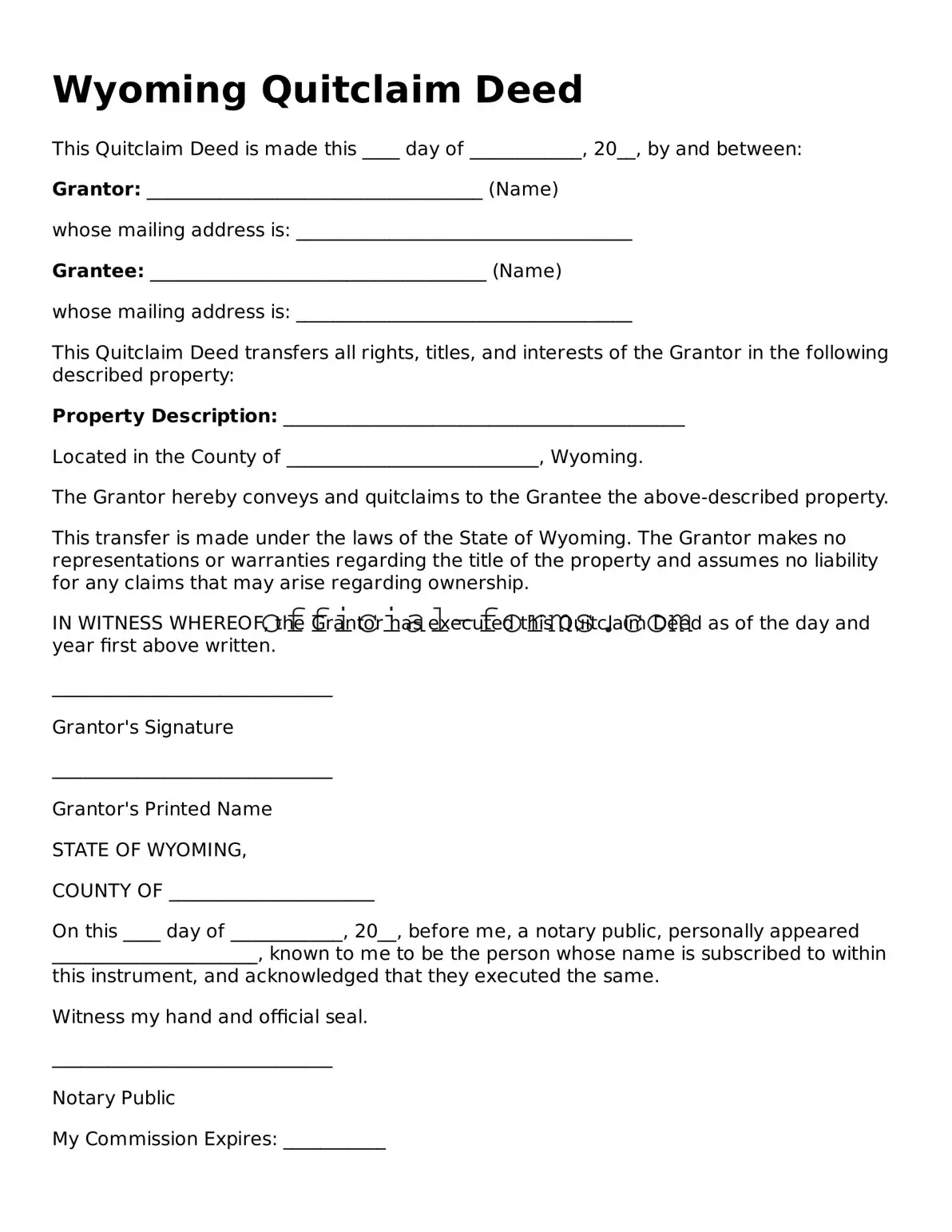The Wyoming Quitclaim Deed form serves as a crucial tool for individuals looking to transfer property ownership in a straightforward manner. This form allows one party, known as the grantor, to convey their interest in a property to another party, the grantee, without making any guarantees about the property’s title. It is particularly useful in situations where the parties involved have a pre-existing relationship, such as family members or friends, as it simplifies the transfer process. The form typically includes essential details such as the names of both the grantor and grantee, a description of the property being transferred, and the date of the transaction. Importantly, the Quitclaim Deed does not provide any warranties or assurances regarding the property’s condition or title, which distinguishes it from other types of deeds. As such, those using this form should be aware of the potential risks involved, especially if there are existing liens or claims against the property. Understanding the nuances of the Wyoming Quitclaim Deed is essential for anyone involved in property transactions in the state, ensuring a smoother process and clearer expectations for all parties involved.
